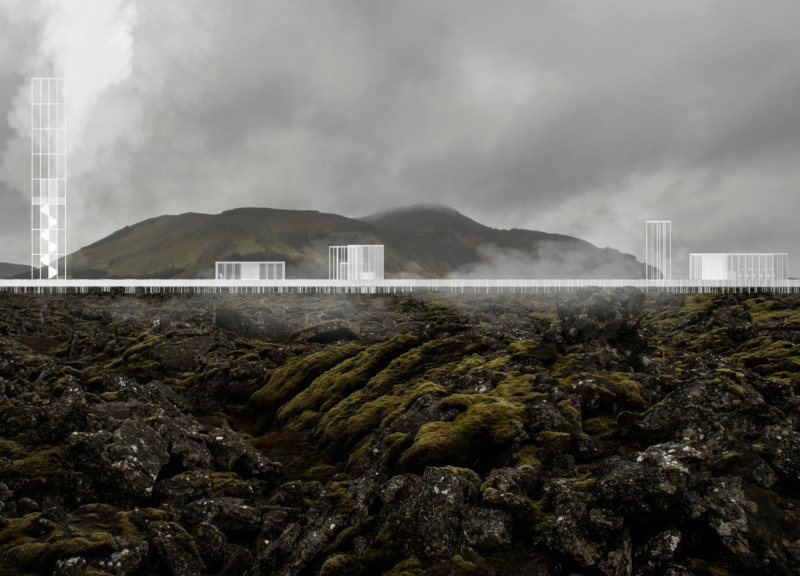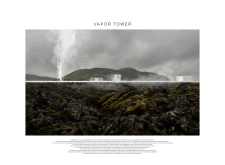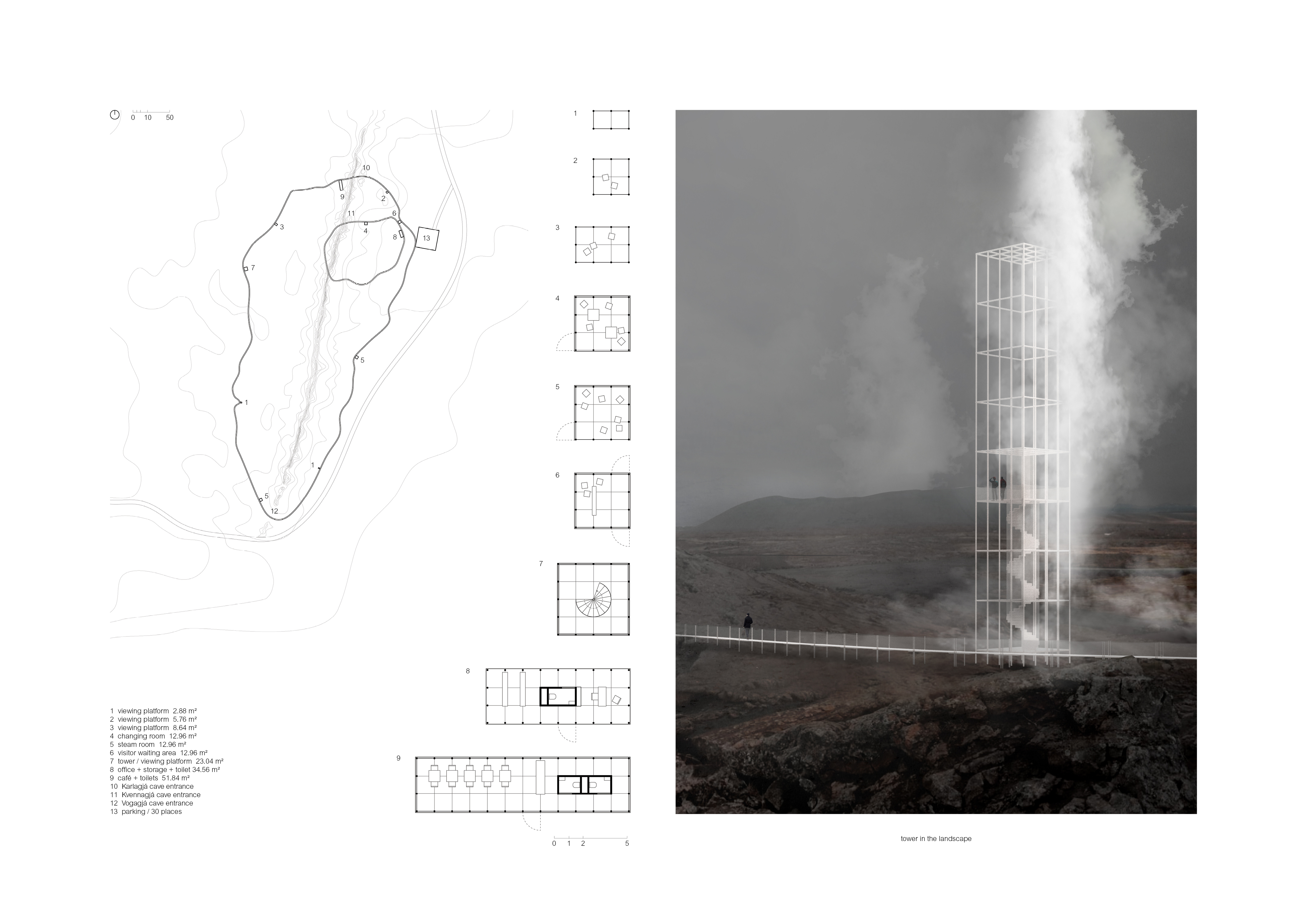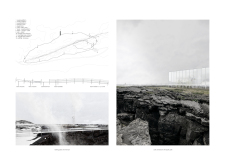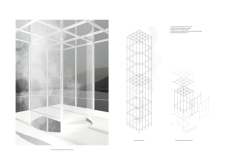5 key facts about this project
The project in Grjótagjá takes full advantage of its unique landscape, defined by the meeting of two large tectonic plates. This area is marked by remarkable geological features and geothermal activity, providing an intriguing backdrop for the design. The structure aims to serve as a point of interest, enhancing the experience of visitors while integrating smoothly with the natural environment.
Design Concept
The design centers around a tower that embodies the connection between nature and human-made structures. It harnesses geothermal energy from the ground and transforms it into water vapor, creating a defining element for Grjótagjá. This approach not only highlights the natural beauty of the site but also emphasizes the interactions between landscape and architecture.
Spatial Organization
A modular strategy is employed, utilizing lightweight components that allow for easy construction and flexibility. These modules are arranged as small, distinct objects scattered throughout the landscape. This arrangement minimizes disruption to the natural ground while promoting a sense of continuity with the environment. This thoughtful layout encourages exploration, inviting visitors to engage with their surroundings.
Pathway Connectivity
A walking path connects the various spaces, forming a public loop that links important locations like Karlagjá and Vogagjá. This pathway enhances accessibility and promotes movement throughout the site. By encouraging people to wander, it fosters a deeper connection to the landscape, allowing visitors to experience the geological features up close.
Materiality and Sustainability
The materials chosen for the project focus on sustainability and visual harmony. The structures are made from white-painted steel, which provides contrast against the natural scenery while maintaining a simple aesthetic. The design efficiently uses geothermal energy, striving to minimize environmental impact and demonstrate a commitment to ecological principles.
The architecture culminates in a well-considered structure that rises from the land, creating an inviting presence that relates to the local geological phenomena.


